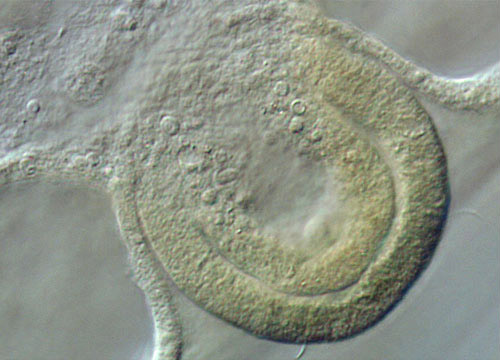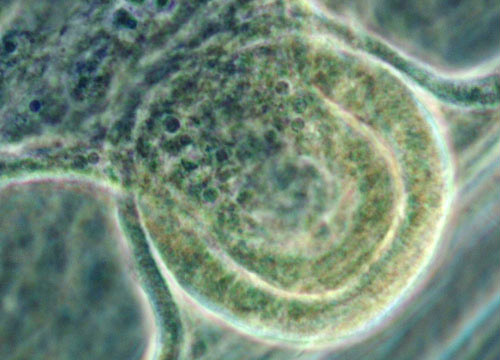Aurelia Ephyra-Stage Jellyfish
Members of the jellyfish in the class Scyphozoa undergo a complex life cycle including a larval medusa or ephyra stage. The genus Aurelia demonstrates the typical life stages for this class of invertebrates, which also includes the free-swimming planula, the stalked and tentacled scyphistoma polyp, the strobila bud, and the mature medusa stages.
 DIC
DIC
 Phase
Phase
Phase
Between the dominant adult medusa stage and the small and inconspicuous larval polyp stage, Aurelia jellyfish undergo the ephyra stage. The common and cosmopolitan moon jelly (A. aurita) is often used as a laboratory experimental and dissection model to illustrate the typical Aurelia life stages. Tiny ephyrae swim free of the sessile scyphistoma polyps. As a dispersal stage, the ephyra allows the jellyfish to spread to potential suitable habitats and prevents the placing of all offspring within one locality where they are subject to changes in environmental conditions and catastrophic events.
DIC
In less than a year, the ephyrae mature sexually into medusas. Although not mature, most of the adult characteristics (except gonads) are present in this larval stage, but in different proportions. Most notably, the eight pairs of lappets are disproportionately large in comparison with adult jellyfish of the same species. While lappets are inconspicuous on adult Aurelia members, they dominate the ephyrae. Other body parts, such as themanubrium and the arms, are common to both larval ephyrae and mature medusas in most Scyphozoa species. The rhopalia are eight sensory organs that are evenly spaced around the fringe of the bell of both stages. Each rhopalium contains a statocyst for balance and sensing gravity and an ocellus for photoreception. In the adult stage, the large lappets of the ephyra are reduced to small, triangular sense organs located adjacent to the rhopalia.















